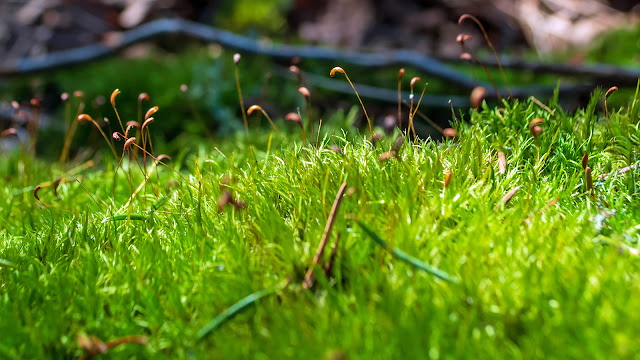When the tide goes out, millions of little scurrying critters go into hiding, under rocks, buried in the sand, under still-damp seaweed. Limpets and chitons clamp themselves tightly to whatever they were travelling on when the water left, usually managing to get into some shade first. Snails slide into cracks and close their doors. The barnacles, the mussels, and the oysters, more than any other of the intertidal animals, have no option but to wait out the dry spell in the open, exposed to the sun and the wind. They can close their shells. But they can't hide; they're glued to the inmovable rock.
 |
| Sandstone "sculpture" with oysters. |
In my aquarium, I can put a finger on a limpet on the wall and push it to one side. One push; then the limpet snaps itself down to the glass, and cannot be moved. Sheer muscle power!
 |
| Oyster and barnacles on a rock. Some water still remains. |
Oysters are tougher. There's no give to an oyster shell, not even when it's just the left (bottom) valve stuck to a rock after the oyster has died. With a bit of shell, you can scrape the barnacle's base off the rock; not the oyster's.
... the cohesive force between the hard substratum and the shell is so strong that a cemented valve can rarely be detached without breaking the shell or the substratum. (Researchgate)
The oyster cement appears to be harder than the substances mussels and barnacles use for sticking to rocks," he said. "The adhesives produced by mussels and barnacles are mostly made of proteins, but oyster adhesive is about 90 percent calcium carbonate, or chalk. On its own, chalk is not sticky. So the key to oyster adhesion may be a unique combination of this hard, inorganic component with the remaining 10 percent of the material that is protein. (Purdue University)
 |
| Another few oysters, with barnacles and periwinkles. The red tint is the reflection of my winter jacket. |
The glue is deposited only by the left valve, the one on the underside. This valve is deep and holds the living oyster inside. The right valve serves as a lid.
 |
| Oyster and barnacles on a smaller stone. Not a good choice; this rock can roll. |
First, tiny glands lay down a web of protein fibers. Next, they release a calcium paste onto the web, and it hardens like plaster. (ShapeOfLife)
... la fuerza cohesiva entre el sustrato duro y la concha es tan fuerte que una valva cimentada raras veces se puede separar sin romper o la concha o el sustrato. (ResearchGate)
El pegamento de los ostiones parece ser más duro que las sustancias que usan los mejillones y bálanos para adherirse a las rocas — dijo. — Los adhesivos producidos por los mejillones y bálanos se componen principalmente de proteínas, pero el pegamento de los ostiones es aproximadamente el 90 por ciento carbonato de calcio, o sea caliza. De por sí, la caliza no es pegajosa. Por lo tanto, la clave que explica la adhesión de los ostiones puede ser una combinación única de esta sustancia dura, inorgánica con el otro 10 por ciento del material que es proteína. (Purdue University)
Primero, glándulas pequeñas producen una red de fibras de proteínas. Luego, sueltan una pasta de calcio encima de la red, y ésta se endurece como si fuera yeso. (ShapeOfLife)


















































